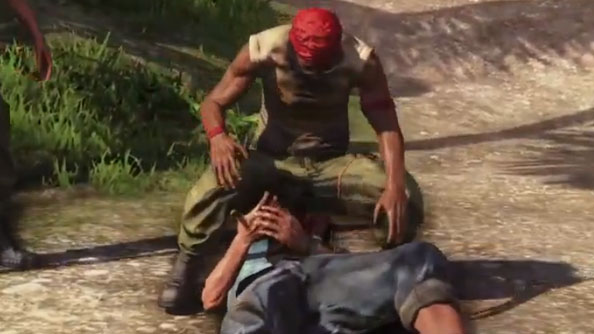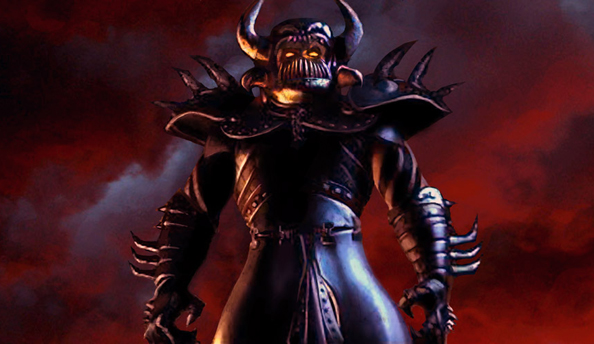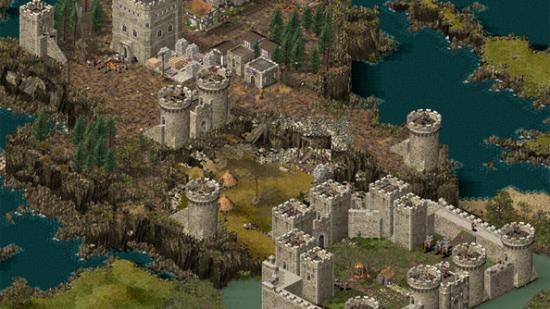It’s Sunday so, like me, you’re likely desperately scrabbling about to find something to tear your attention away from New Girl which you are both appalled by and have somehow watched 12 episodes of in the last 12 hours. Luckily through years of hard graft we’ve learned that the only way to break from poor comedy sitcoms is to lose yourself in a few games.
Here’s what we’ve been playing this week.
Paul Dean: Stronghold HD
I am a castle nerd. One of my dream holiday destinations is Neuschwanstein and I am absolutely fascinated by just about everything to do with castles, from their engineering and construction to what it was like living inside them and just how big they could get. Some are clearly military buildings, some are much more like works of art or status symbols, but each of them still is the meanest, baddest, toughest bunch of bricks on the block.
Though various terrible coincidences, I missed out on most of the Crusader games when they first came out, and when I went to grab Stronghold 3 I was stopped by friends who told me that, unfortunately, it was a flawed creation. Now, finally, I have my chance to build and build to my heart’s content.
Stronghold has certainly aged and an HD patch doesn’t do much to take the edge off that, but this decade-old game still does a good enough job of providing me the opportunity to construct keeps, raise walls, place towers and populate all this with dozens of soldiers. I’ve always been surprised that more PC developers haven’t made castle-building games, since it’s a chance to flex RTS muscles and show off economics chops, both of which are common themes throughout PC gaming. Still, Firefly seem to have this particular subgenre firmly in their grasp and I’ll be interested to see what they end up doing with Crusader 2, their next title.
You know, I think one of the things that got me so hooked on Minecraft was the discovery that I could use it to build castles. Still, I shouldn’t talk too much about that game. I may suffer a relapse.

Julian Benson: Super Hexagon
Of all the releases of this year, and there have been some exceptional games, it’s Super Hexagon that I keep playing. When XCOM first hit Steam I stayed up through the night playing, I was completely hooked, but past the first week I had to move on to other things. Since Super Hexagon came out, yes, I had the initial staying up all night playing but that didn’t drop off, I’m still playing it now. In fact, instead of writing this I’ve already booted up the game to play a quick few minutes. Twice.
It’s because Super Hexagon is a pure game. It has no story, no tutorial, no pause menu, no characters (well, sort of). You simply play. And it’s such a simple concept: you control a triangle that’s locked to a tight circle at the centre of the screen, you can only move clockwise and anti-clockwise to thread your way through patterns of oncoming shapes. That’s it.
Here, the trailer gets it across best:
It is extremely difficult, at first. You’ll have to fight to stay alive for more than eight seconds, the wall of shapes is just too fast and too complex to navigate, but as you play,buoyedby the thumping chiptunes you’ll start to inch up your score, a fewmillisecondsat a time. the first time you break 60 seconds you’ll have a palpable sense of relief. Of course, doing so unlocks the first of the hyper modes. They’re ridiculously challenging but there lies the thrill.
The only other game I’ve found that sits in this spot of pure entertainment is Robot Unicorn Attack. Though, if anything, Super Hexagon is even more puritanical – it has no lives, unlike the three life system in Unicorn.
You must play it.

Rob Zacny: Far Cry 3
When Far Cry 3 is good, it’s amazing. I’m jumping from a clifftop with a hang glider, swooping like Batman down on a pirate encampment far below. I skim low over the water, jump down, then swim ashore like a one-man Normandy landing. I’m memorizing patrol routes, cutting guards down like trees, botching a stealth kill, then winning a full-on firefight against twenty reinforcements.
But then I’m standing over the corpses, mashing “E” and waiting for the game to acknowledge my desire to use a basic mechanic. Then I’m grabbing up vendor trash in a bloody-damned shooter and being told that my loot inventory is full and I need to get rid of some items or craft a bigger bag using some lemur scrota I’m supposed to collect. Fantastic, innovative nuisance elements you’ve brought over from RPGs, Far Cry 3. Well done.
But then I’m sneaking into a pirate base and I hear a growl. I turn around and I’m being stalked by a Bengal tiger! I can almost see it debating whether or not to eat me, so I fling a stone about halfway between me and a nearby pirate sentry and the tiger is like, “Oh? What have we here? Could it be… lunch?!” And I’m like, “Yes, yes! Nice kitty! Eat that man.”
Suddenly a tiger is bounding into the middle of the pirate base and all hell is breaking loose while I casually stroll past, whistling a jaunty little tune while I disable an alarm system and climb into a watch tower to watch the fight, feeling like an emperor watching the gladiatorial duels. The tiger is giving the pirates hell, ripping them down right and left, and I’m picking off gunmen at the edges of the fight. Because everyone should have a sporting chance.
But then I get an intrusive notification that there’s a handbook entry for the tiger, and I read it and immediately regret it. It’s like bad standup comedy, where every entry concludes with an unspoken, “Am I right fellas?” It’s so lazy and sloppy that it makes me doubt other parts of Far Cry 3’s story, which already flirts with offensively stereotypical characters and a White Savior complex. Then it takes four pushes of the Escape key to get back to the action, and inventory management and crafting is even clunkier.
I like Far Cry 3 quite a bit, but it’s flaws are wildly intrusive and undercut just about everything the game does well. At this point, I’m just praying for a patch that gives me the option to turn off the minimap. The rest, I suppose I’ll have to learn to live with.

Jeremy Peel: Baldur’s Gate
I’ve just been to see The Hobbit at my local picture house – a film that, like its protagonist Bilbo after long years spent in the company of his precious ring, feels like “butter scraped over too much bread.” (You totally took this from one of the broadsheet reviews, right? – PD)
That’s a story better told elsewhere. But at some point during its generous running time, my thought train was derailed and began trundling down a track bordered by computer RPGs old and new. It’s no secret that contemporary fantasy fiction remains very much in thrall to the now-120-year-old JRR. Sometimes I hate that a non-high fantasy setting is more than enough to set an RPG apart, but just now I’m happy to look beyond the tropes and remember one of the peculiar joys we owe to the old bastard, and to The Hobbit more precisely.
Bilbo Baggins is no warrior, and nor does he grow through a series of life-altering encounters to be become one. No – instead he is a reluctant burglar. Why else is no adventuring party complete without a thief, of all things? And why in DnD do halflings make the best sneaks?
There’s one scene in particular, transposed rather faithfully from the book, which puts me in mind of a familiar battle routine in the second edition DnD-sourced Baldur’s Gate. The fourteenth member of Thorin’s Company is punted unceremoniously into the camp of three mountain trolls, and spends a couple of minutes attempting to pickpocket the smallest – only to be discovered, and have a host of dwarves flood in to his rescue.
Baldur’s Gate is all about this. After a minute or so of failed attempts to enter ‘the shadows’ – low-level sneaking can be somewhat like starting a car in cold weather – the thief is routinely sent in to scout out the next encounter and sat behind the toughest enemy for a backstab attempt. Success or no, what follows is the roar of the party proper coming in to take the worst of the retribution, and a swift exit stage left for our rogue. It’s a familiar loop that never fails to provide tension and critical hits.
The burglar is just as central to popular RPG development today, in Dragon Age, in Project Eternity and in solitary form in Skyrim. I suppose we’ve Mr Baggins to thank for adding a touch of sage to our tales of sword-swingers and fire-flingers.
